- Home
- Allison Brennan
Nothing to Hide Page 23
Nothing to Hide Read online
Page 23
“If you need my authorization, you have it. Make the request.”
“I want to call in my brother—Dr. Dillon Kincaid. He consults with the FBI and I’ve already been talking to him, off the record. But I need BSU to formalize it.”
“Whatever you need, do it. Don’t worry about Walker. He has his own baggage, and if he can’t see the value in consulting with experts, that’s his problem.”
“I want to set it up and inform him that it’s happening, see what he does. He might just avoid it, and I’m okay with that—but we need a direction because everything else has led to a dead end.”
“And you think another body is going to drop.”
“I know it. Unless we find him first.”
* * *
Lucy spent all morning going through proper channels—and cutting a few corners—to get a BSU-approved consult with Dillon. She sent all her notes and the files to the BSU district liaison and received a confirmation that Dr. Dillon Kincaid and a BSU agent will be available to consult via video at 2 pm ET.
That was one p.m. locally. She considered all her options, and decided that if she asked Walker to come here, he would be in enemy territory—in his mind. She didn’t want to blindside him completely. So she brought everything over to the sheriff’s office and set up the equipment in the small conference room that they had been using. She then texted him and asked him to meet her as soon as possible, but didn’t say why.
Lucy didn’t like confrontation, and she grew even more tense as she waited for Jerry.
He walked in at five to one, handed her a Starbucks coffee. “The coffee here is crap, and you drink more than I do.”
“Thank you,” she said. She took a deep breath as he eyed the small video screen. “You and I agree that we’re dealing with a serial killer, albeit not a traditional killer.”
“This isn’t new.”
“And as every road we’ve traveled has ended us nowhere but back at square one—and we spent all afternoon reviewing every file, every piece of evidence, and have no more leads—I think it would benefit us to consult with fresh eyes. I honestly considered doing this on my own, at FBI headquarters, but then you would think I was taking the case, and I’m not.”
“Nor would I let you,” he said, his voice low and rough.
“I want full transparency here. Dillon is my brother. I asked specifically for him because he doesn’t work for the FBI, but often consults for the FBI. We need more information about this killer. Criminal profiling isn’t going to hand us a name, but it will give us information that can help us evaluate the crime scenes in a different light. If we can’t figure out why the killer is targeting these specific men, we’ll never be able to find him until he makes a mistake. I don’t want to face another victim if we haven’t done everything humanly possible to stop him.”
She sighed, then continued when Jerry didn’t say a word. “I get it—you had a bad experience on the Barton case.”
“What the hell do you know about that?”
“I’m a cop. I learn things. And I can’t say whether the profile was right or wrong, or whether Stocum—who is no longer in our office—screwed up and those two little boys could have been saved. I don’t know. I wasn’t there. But you’re a good cop and I trust your judgment. You think it was a screwed-up investigation, I trust your assessment. But that doesn’t mean that a profile in this case can’t help us.”
“Dammit, Kincaid! You went over my head!”
“Yes and no,” she admitted. “I did set this up, but I want to do it here. I want you to participate. Go ahead and leave, I’ll talk to BSU and see what I can learn. But I would much rather you be here because you know this case backward and forward and might think of things to ask that I don’t. I sent the files to Dillon this morning. I want to hear what he has to say. And your experience and insight will be invaluable.”
“Don’t placate me.”
“I’m not. All I want is for you to hear him out.”
“And what happens if you agree with him and I don’t? If I think he’s full of horse shit and you think he’s speaking gospel?”
“Talk about borrowing trouble.”
The video chat beeped. “You can go,” she said.
He didn’t budge.
Lucy turned and answered the chat. A second later, Dillon’s face appeared on the large computer screen she’d brought in. He was in his home office, and Hans Vigo was sitting next to him, on the edge of the screen. “Hans,” Lucy said, “I didn’t expect you.”
“I saw your request, and since I had other business to discuss with your brother, I opted to take the consult.”
“Are you back in BSU?”
“No, still stuck at headquarters, but spending more time at Quantico teaching. Might be permanent. I have five more years until mandatory retirement, and spending that time at Quantico is sounding better and better.”
Hans had been seriously injured two years ago when Lucy had been going through the FBI academy, and though he didn’t complain, she didn’t think he was 100 percent. He’d started in a field office, then went to BSU, was the assistant director at Quantico, then moved over to headquarters to liaison with regional offices. He’d been out in San Antonio last summer, and Lucy always liked working with him. Hans had been her mentor, and was one of Dillon’s closest friends.
“Where’s your partner?” Dillon said.
“Right here.” She looked over at Jerry, who was standing out of the way of the camera. She moved her chair over slightly and pulled up a chair for Jerry. “He just got back from getting me coffee.” She held up the cup.
“Good partner,” Dillon said.
Jerry glared at her, then blanked his face and sat down next to her. “Deputy Investigator Jerry Walker, Bexar County Sheriff’s Office,” he said.
“Dr. Dillon Kincaid, forensic psychiatrist. Lucy’s brother, as I’m sure she’s told you. This is Dr. Hans Vigo, assistant director with the FBI.”
“Not as glamorous as it sounds,” Hans said. “Like I just said to Lucy, I’m looking forward to going back to Quantico permanently.”
“Y’all have worked together before, I take it.”
“A few times,” Hans said. “I was down there last year when your local congresswoman was under investigation. Then I worked with Deputy Marcus Bellows on follow-up—know him?”
Jerry was surprised, but masked it pretty well. “Yep. We go way back.”
“Good cop,” Hans said. “You have a lot of good people down there.”
Lucy wanted to kiss Hans. Dillon must have filled him in on the situation with Jerry and his animosity to psychology. Having that local connection would help put Jerry at ease.
Dillon said, “We know you’re deep in this investigation, so I’m ready to jump in. Both Hans and I have read the case files and witness notes, and watched the simulations that your forensics unit put together—amazing stuff, really. I looked at the methodology, and I might suggest a couple minor changes in the assumptions, but the bulk of the analysis is accurate. We don’t need to rehash the crime scenes—but was there anything that came up today that changes where you are in the investigation?”
“We’re nowhere, if that’s what you mean,” Jerry said. “What we know is that the crimes would never have been connected if they didn’t present the same way and if the same gun wasn’t used. We may in fact have ourselves a random serial killer.”
“Definitely a serial killer, at least by the definition. But there is nothing random about these murders,” Dillon said. “Each victim was selected with a purpose.”
“Which is?”
“That, we can’t determine with the information we have. When Lucy and I talked the other night, she floated the idea that this was an act, that she felt that the killer was setting a stage. I think that’s a good analogy. He—or she—wants you to see the crime scene in a specific way. It’s nonsensical on the one hand, right? The shattered hands, the beating, a Taser that was unnecessary, at least in two of the m
urders. The order of attack was different with each victim, yet the wounds matched up more or less in the end. Beating, hands shattered, Taser to the side, bullet to the face. Each victim found on his back. Each victim shot in the middle of his face, obliterating his identity. But there was no question as to who each victim was—their vehicle, registration, wallet, ID, and prints all pointed to their identity. There was no attempt to conceal the body. There was no passion to these murders.”
“Back up,” Jerry said. “What the hell do you mean by passion? Sex crimes?”
“Not that kind of passion. I mean to say, the killer didn’t take particular joy in killing these men. No overkill.”
“The hands were overkill,” Lucy said.
“True—and it’s odd. And because it’s odd, it was the first thing we all looked at, right? Trying to figure out what it means. And my professional opinion is that the hands mean nothing.”
“Then why?” Lucy said.
“Go back to your initial gut feeling—that the killer is creating a scene. Who studies that scene? Cops. You look at the crime scene and come to conclusions based on the evidence. You see shattered hands, you think a thief, a man who can’t keep his hands to himself, or rage. But there was no rage in these murders. None of the murders took longer than three minutes. Attack, kill. The shattered hands and the duct tape were props, for lack of a better word.”
“And the Taser,” Lucy said.
“Actually, I think the killer needed the Taser with the first victim, Standish. He fought back and might have been on the verge of getting away—or getting the upper hand on his assailant. The Taser put him to his knees, and then another blow had him back down. The biggest change I would suggest to your analysis is that I think the first murder was more violent—that the killer was hurt in the fight, and would have shown signs of injury.”
“There was no physical evidence on Standish or around the crime scene,” Jerry said. “No DNA, no hair or unidentified fibers.”
“I’m not surprised. The killer wore gloves, and he came prepared, down to the type of clothing he wore. This was an extremely well-planned murder. All of them were. Getting back to the Taser, because the killer used it on the first victim—he had to use it on all future victims. In some ways, the killer is mimicking the first kill.”
“But is it?” Lucy asked. “Can someone kill so violently his first time? With no hesitation or mistakes?”
“Good question, and most of the time I would say no. This time—I can’t honestly say. I think, but I would not swear, that Standish was the first time for this killer. Something happened in the weeks or months before the first murder that triggered the killer. Something happened where he went from anger and frustration with his own life to murder.”
“That’s true in just about any crime,” Jerry said. His disdain was there, in his tone, and Lucy tried not to react defensively.
“Absolutely,” Hans concurred. “And doubly true for a serial killer. A guy who robs a bank—he might be thinking about it for a while, but it isn’t until he gets to that all is lost moment, like when his girlfriend leaves him or his wife kicks him out or he loses his job—that’s when he acts. But a serial killer has had the urge to kill for a long time. They have fantasized about killing for a long time—definitely for months, but often for years. I worked a case early in my career where a guy killed nine women over the course of two years, and when I interviewed him, we learned that he had been thinking about killing women for more than twenty years before he had the courage and opportunity to do so—he’d been fantasizing since he was a teenager. But to go from fantasy to action, it is almost always a very specific event or series of events that lead to the first kill.”
“What is stumping me,” Dillon said, “as well as Hans, is that we don’t have the why. In most serial killings we can look at the victim pool and see the why. But this time it’s not clear. There’s no connection between the victims. While they were all married, and they are all in the same relative age group, that’s not enough to say that those two similarities were factors. In that case, it appears random, but the killer singled them out for a reason—therefore, they are not truly random.”
Lucy said, “I’ve suggested the killer stalked his victims, that he knew their routine.”
“That’s a good assumption. They were not spontaneous kills—they were planned kills. The killer knew their routes home, and planted himself on each route to lure the victims to the side of the road. The Standish case in particular proves that because he had grease on his hands from a vehicle. But the biggest takeaway here—the key point that Hans and I agree on—is that the killer is uniquely cold. This is a coldness that cannot be hidden. He would be polite, respectful, follow all the social norms. But people who know the killer would probably call him or her introverted, quiet, intelligent, aloof, possibly antisocial. This is not someone who likes people in general, but he can function in society. He or she has at least some college education, above-average intelligence, organized not just as a killer, but in his personal life. He may have friends, he may be married, but he keeps his friends at a distance and is cool with his spouse. However, the killer can play whatever part is needed—true sociopaths are masters of understanding character and psychology, so they can step into a variety of roles with ease. They can’t stay in the role forever, but they can play the part. That makes these sorts of killers extremely difficult to track. The BTK Killer, for example, appeared to be a mild-mannered, churchgoing, loving husband and father—we learned that he was a brutal killer whose own arrogance in taunting the police helped with his identification and capture. But here—this killer is setting the stage for the police, leaving bread crumbs, if you will, to follow. But he does not want to be caught.
“This killer is arrogant to the point that he or she thinks that he is better than most people, because he’s either smarter or better looking or morally superior. Some serial killers want to be stopped, they have an inner battle between right and wrong. They know that what they are doing is reprehensible, but they almost can’t help themselves. So they make mistakes, or drop clues on purpose, hoping that the police will stop them … but also hoping they can continue for as long as possible. This killer does not want to be caught. He fully intends to get away with murder.”
“Excuse me,” Jerry said, “you talk a good game, Doc, but how can you possibly make that deduction? I’m not saying he wants to be caught or doesn’t, but how can you make a blanket statement that he’s cold and aloof in his day-to-day life? That he went to college? That sounds like psychobabble.”
Lucy winced, but neither Dillon nor Hans was fazed. “I understand your skepticism,” Dillon said, “and that’s going to help you in this case. I think you need to look more closely at Steven James and the people in his life. He absolutely knew who his killer was. The others may have known the killer, and they weren’t scared—hence turning their backs—but James faced the killer and likely talked to him. Why did he pull over? It was the most populated of the three crime scenes. The parking lot itself was empty, but it was near open businesses. Was he meeting someone there? A client? A friend? How did he communicate with them? We know he called his wife when his flight landed, but that was the only call he made after he de-boarded the plane. Had he planned something before he left California?”
“Dillon makes all good points, and I concur,” Hans said, “but I also want to suggest that even the gunshot to the face—which is cold, calculating—was part of the scene. To make us question motive versus opportunity, to steer our investigation into a specific direction.”
“I see that,” Lucy said, “and it was completely clear after watching the simulations. But Jerry and I reviewed how each crime scene was approached and investigated, and it wouldn’t have made a difference. Jerry had the first two solo—and there’s nothing he did or didn’t do that I would have done differently.”
“But it wasn’t a robbery. If it was a robbery-homicide, it would have been investigated differently
. The focus would be elsewhere because robbery would be the obvious motive. But these murders were staged as a brutal attack, no obvious motive, and you dug deep into the lives of all three victims. You uncovered things about them and their families. What you have learned may not make sense now … but it will when the next body drops, simply by the law of percentages.”
“Next body,” Jerry said bluntly. “Aren’t we here doing this song and dance so there won’t be another victim?”
“In a perfect world,” Dillon said, “but the next victim is already selected. The only thing I’m one hundred percent confident about is that the murder will happen on a Friday night, and that the victim will be male.”
“Why Friday?” Lucy asked.
“I think because the killer would be missed other days. By an employer or family. This killer is extremely smart. But very smart people can trip themselves up in their own brilliance. When you find this person—and while I lean male, Hans leans female—”
“Why?” Jerry interrupted.
“Because a male killer isn’t going to hit another guy in the groin, unless the killer was sexually assaulted as a child or teen,” Hans said. “That’s my expert opinion. But this doesn’t read like a sexual crime.”
“Except,” Lucy said, “the groin and hands were attacked. It could be a symbol of being touched. An explicitly sexual response.”
“That was my guess,” Dillon said, “but it’s still a guess because we all agree that everything about the crime scene is staged, and I’m wondering if the sexual overtones are there with purpose, not because the killer was previously abused.”
“You were saying something, Doc,” Jerry commented. “That when we find this person, male or female…”
“You won’t get them to confess. They will look you in the eye and lie. They are so cold, so collected, a lie detector would be iffy—and I wouldn’t offer it up. Even if you present them with irrefutable evidence of their guilt, they will calmly deny that they had anything to do with the crimes. You’re not going to rattle them. You need an absolute airtight case against them because they will go all the way to trial without hesitation. There’s no doubt in my mind that the killer wants at least one of these people dead—likely for a selfish reason—or perhaps all of them. But because of the theatrics, the forensic bread crumbs, it very well could be two murders are covering up the true motive for one.”

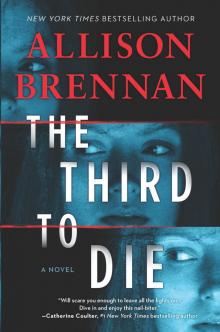 The Third to Die
The Third to Die Nothing to Hide
Nothing to Hide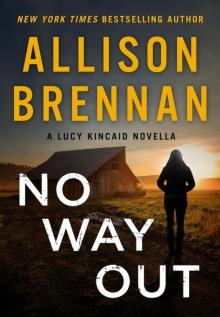 No Way Out
No Way Out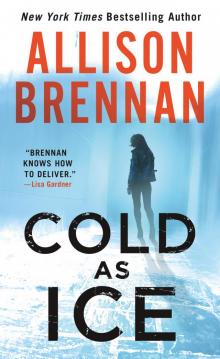 Cold as Ice
Cold as Ice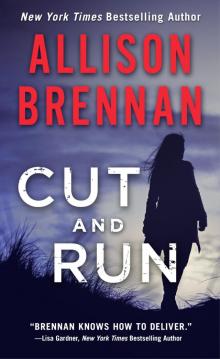 Cut and Run
Cut and Run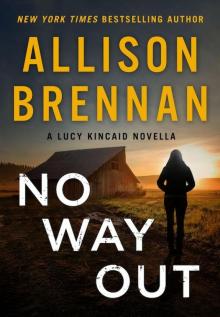 No Way Out (Lucy Kincaid Novels)
No Way Out (Lucy Kincaid Novels)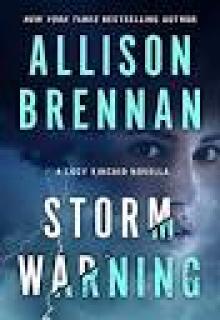 Storm Warning
Storm Warning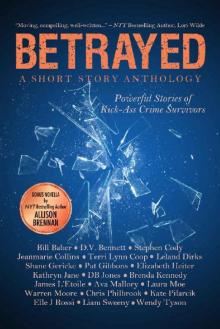 Betrayed: Powerful Stories of Kick-Ass Crime Survivors
Betrayed: Powerful Stories of Kick-Ass Crime Survivors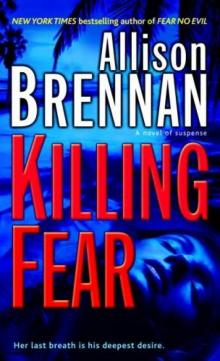 Killing Fear pb-1
Killing Fear pb-1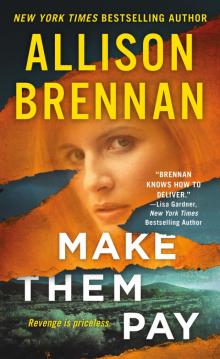 Make Them Pay
Make Them Pay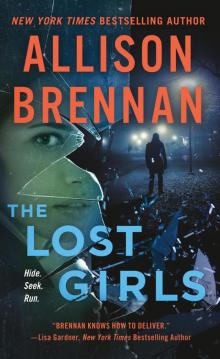 The Lost Girls
The Lost Girls Stalked
Stalked Killing Justice
Killing Justice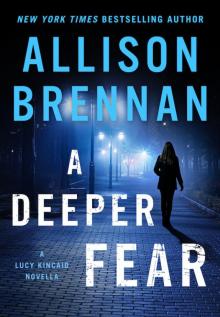 A Deeper Fear
A Deeper Fear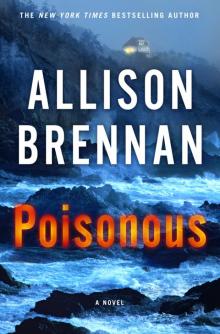 Poisonous
Poisonous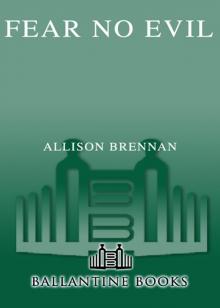 Fear No Evil
Fear No Evil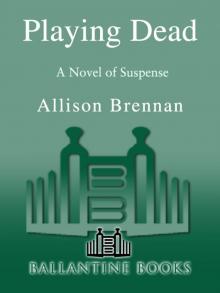 Playing Dead
Playing Dead Cold Snap
Cold Snap Vacation Interrupted
Vacation Interrupted Frosted (Moreno & Hart Mysteries)
Frosted (Moreno & Hart Mysteries)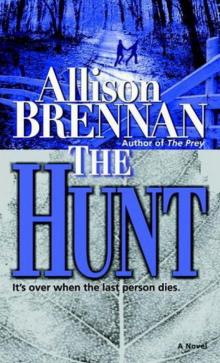 2 - The Hunt
2 - The Hunt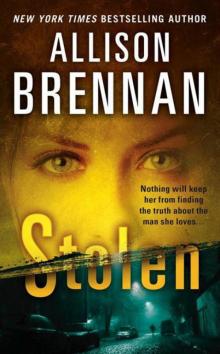 Stolen
Stolen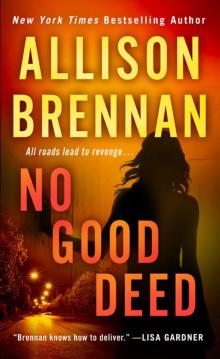 No Good Deed
No Good Deed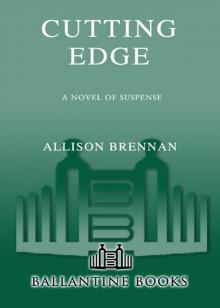 Cutting Edge
Cutting Edge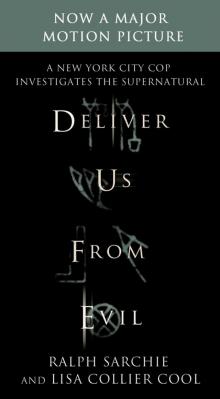 Deliver Us from Evil
Deliver Us from Evil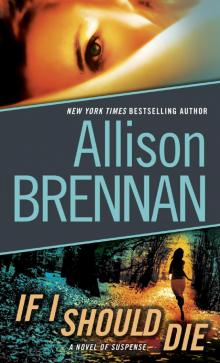 If I Should Die
If I Should Die Speak No Evil
Speak No Evil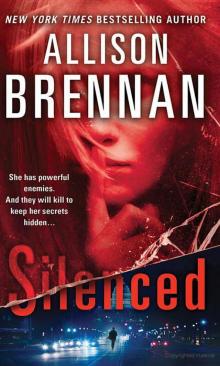 Silenced lk-4
Silenced lk-4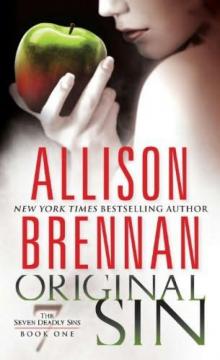 Original Sin sds-1
Original Sin sds-1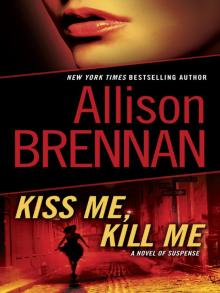 Kiss Me, Kill Me lk-2
Kiss Me, Kill Me lk-2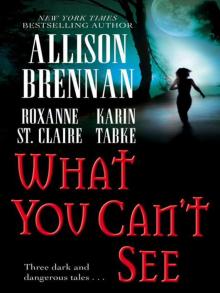 What You Can’t See
What You Can’t See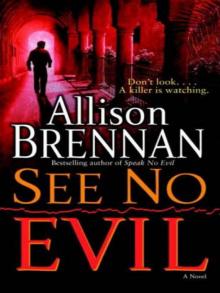 See No Evil
See No Evil The Prey
The Prey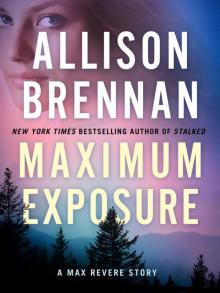 Maximum Exposure
Maximum Exposure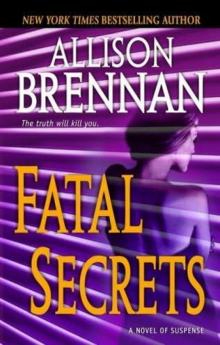 Fatal Secrets f-2
Fatal Secrets f-2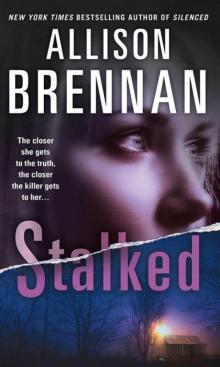 Stalked lk-5
Stalked lk-5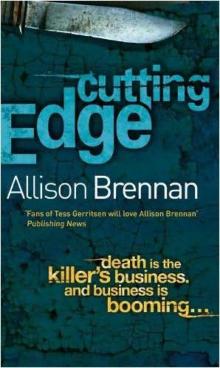 Cutting Edge f-3
Cutting Edge f-3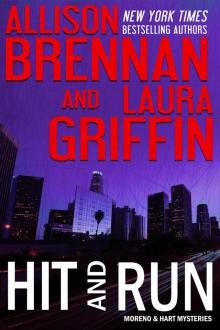 Hit and Run (Moreno & Hart Mysteries)
Hit and Run (Moreno & Hart Mysteries) Sudden Death f-1
Sudden Death f-1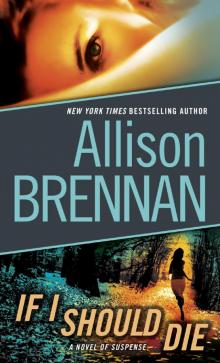 If I Should Die lk-3
If I Should Die lk-3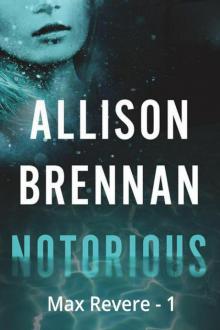 Notorious
Notorious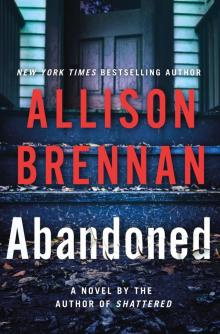 Abandoned
Abandoned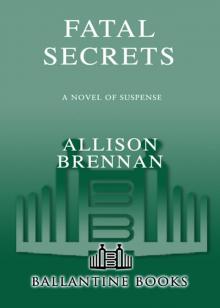 Fatal Secrets
Fatal Secrets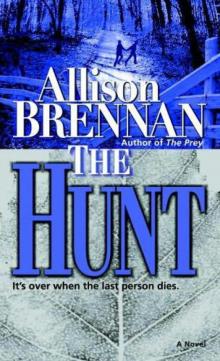 The Hunt
The Hunt Carnal Sin sds-2
Carnal Sin sds-2 Love Is Murder
Love Is Murder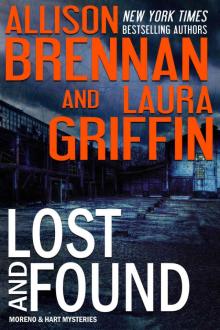 Lost and Found
Lost and Found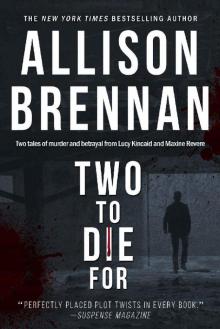 TWO TO DIE FOR
TWO TO DIE FOR Breaking Point
Breaking Point Best Laid Plans
Best Laid Plans Carnal Sin
Carnal Sin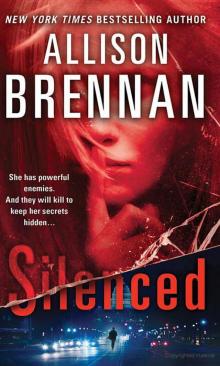 Silenced
Silenced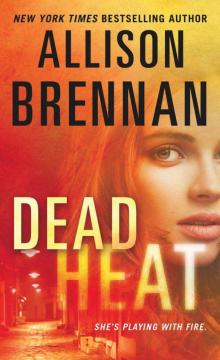 Dead Heat
Dead Heat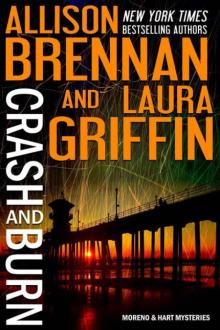 Crash and Burn
Crash and Burn Sudden Death
Sudden Death Lucy - 05 - Stalked
Lucy - 05 - Stalked Mortal Sin
Mortal Sin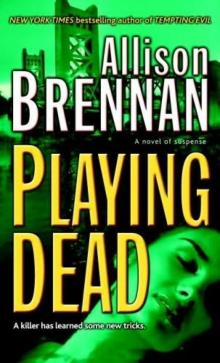 Playing Dead pb-3
Playing Dead pb-3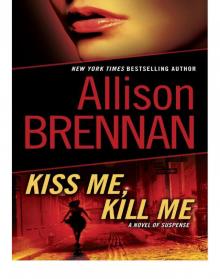 Kiss Me, Kill Me
Kiss Me, Kill Me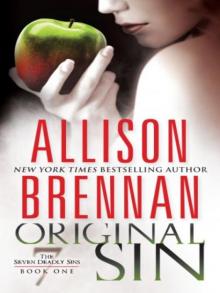 Original Sin: The Seven Deadly Sins
Original Sin: The Seven Deadly Sins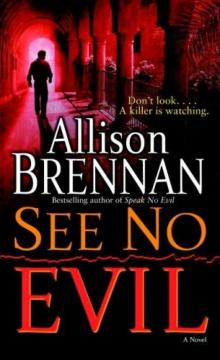 See No Evil e-2
See No Evil e-2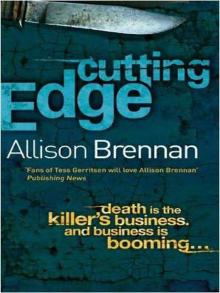 Cutting Edge: A Novel of Suspense
Cutting Edge: A Novel of Suspense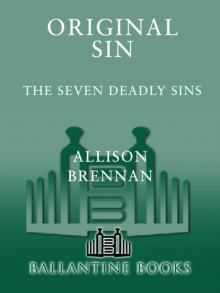 Original Sin
Original Sin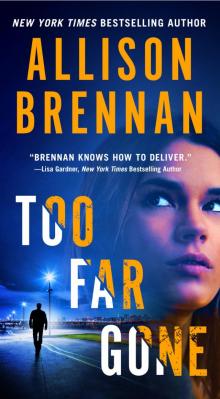 Too Far Gone
Too Far Gone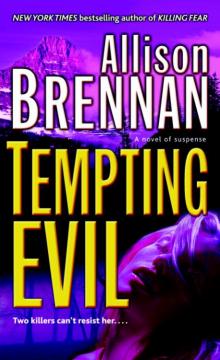 Tempting Evil
Tempting Evil Shattered
Shattered Killing Fear
Killing Fear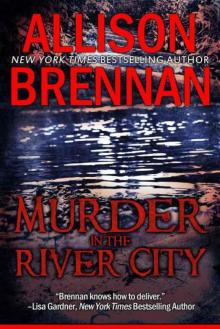 Murder in the River City
Murder in the River City Love Is Murder (lucy kincaid)
Love Is Murder (lucy kincaid)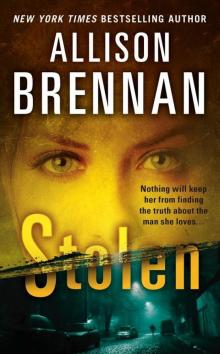 Stolen (Lucy Kincaid Novels)
Stolen (Lucy Kincaid Novels)